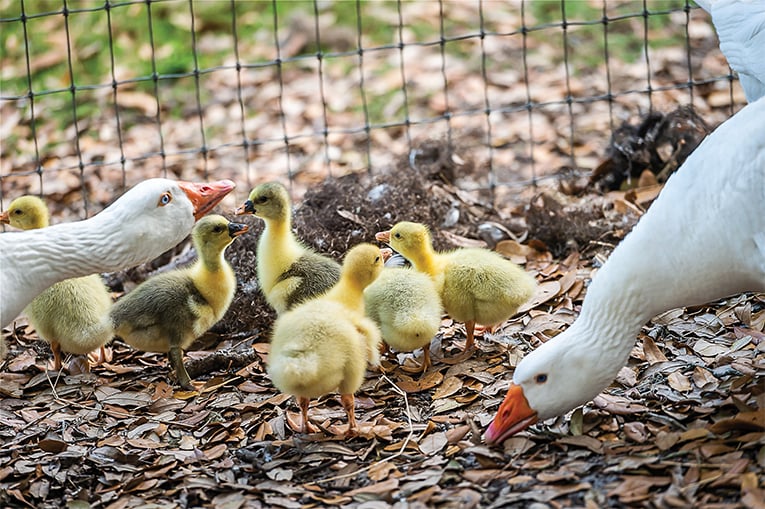Food & Drink: A Delicious Conversation with Chef Hari Pulapaka
Hari Pulapaka is a man on a mission to educate, enlighten and encourage all of us, collectively, to eat our veggies.

A degustation of Eggplant Skin Hummus, Beet and Radish Terrine and Waste Not Sinfully Vegetarian Bread Pudding. (©JENNEFFER PULAPAKA)
The mission isn’t grounded in his long-standing role as a tenured associate professor of mathematics at Stetson University. Nor is the work connected with Cress, the restaurant he helmed until earlier last year when he decided to take a step back from the daily grind as chef/owner of the critically acclaimed spot, where he earned multiple James Beard award nominations.
These days, he is devoted to dispelling the myth that vegetarian cuisine is somehow “less than.” Recently, we sat down to discuss his new book, aptly entitled “Dreaming in Spice: A Sinfully Vegetarian Odyssey.”
Why did you write this book?
I wrote the book to inspire people to think about plant-based or plant-forward food more creatively.
I was intrigued with your title. The word “sinfully” is so evocative. Why did you choose that word?
I was hoping to evoke the idea that, it wasn’t really a religious connotation by any means, but it’s more the idea of decadence and “full-flavoredness.” It’s indulgence.

“Dreaming in Spice: A Sinfully Vegetarian Odyssey” is available for purchase at dreaminginspice.com.
Back to the beginning. You were already a tenured professor ensconced in one profession when you decided to train as a chef. Why was that?
I found myself in a professional midlife crisis and I wanted to do something else as well in life. Not to do something else and give up what I was doing. I wanted to do something else that would excite me and interest me and help me in ways that academics could not anymore. I wanted to take on something that was totally different.
So then came Cress in 2008. How did opening your own restaurant broaden your vision as a chef?
I opened the restaurant because the timing seemed right. That sense of urgency, if it’s not now, it’s never going to happen was sort of in me, I think. I wasn’t prepared to be patient. I had so many ideas in my head that I just couldn’t wait anymore. I wanted to show people what I could do.
You talk a bit about what I would call burnout around 2016. Did the pivot to curated events begin to ignite that passion again?
The reason we went to events was actually to push the envelope, because I was getting bored again. I wanted to push myself as a chef and learn new cuisines and new techniques. And in the back of our minds, we always had a slant toward causes, making some sort of a statement. So it seemed like all of a sudden, the world of food opened up in a way that having a set menu doesn’t do. Do whatever you want! (laughs) If there’s something happening in Nicaragua, you have an event with food based on the cuisine of Nicaragua. It seemed like anything was possible now.
You were raised as a vegetarian and your wife is a vegetarian. When did it become important to you to make interesting vegetarian fare your mission?
Jenneffer [Dr. Jenneffer Pulapaka, Hari’s wife] probably had some input into that: “You know, why don’t you write about vegetarian food?” And it made sense to me.
I came from India, so for me the 21 years of vegetarian dining that I had in India, I didn’t grow up with pot pies and casseroles and steaks and burgers, so it was easy for me to think of vegetarian food without having to think of those concepts. But having been a chef for so long and having been in this country for 33 years now, I know what comfort food is and if you’re trying to make a change and inspire [people] to think outside the box, I feel like there’s a place for those types of dishes. If someone has reasons to want to be healthy, or it’s some other health reason to make a change, or ethical reasons, but they crave those comfort foods, at least you have to meet them halfway, and some of these dishes are meant to do just that.
Who would benefit from reading this book?
I would hope farmers and federal agencies do, agencies that have to do with the growing of produce and vegetables. Obviously the home cook, chefs, consultants, food service companies, because the Syscos of the world are creating premade products for restaurants and chefs who don’t have the time to do it. I don’t know of any boundaries for who could benefit from the book.
Where do you see yourself in five years?
I feel like in five years my time will be even more valuable and I want to just be really making a difference. And travel! I mean, travel. Clearly travel. Travel on behalf of the profession. I would love to be able to travel and consult and write and cook for people, in addition to teaching full-time at Stetson.
Chef Hari shares this recipe for a showstopping terrine worthy of entertaining.
Beet and Radish Terrine
YIELD: approximately 4 servings
INGREDIENTS
- 2 medium golden beets with tops, washed well
- 2 medium red beets with tops, washed well
- 1 medium daikon radish, washed well
- 2 cups small red radishes with tops, washed well
- 1 package silken tofu, drained
- agar-agar to cold set 2 cups of liquid (follow the directions on packaging)
- 1 cup cashews, toasted and ground
- 1/2 cup vegetable stock
- 2 shallots, minced
- 4 cloves garlic, minced
- juice and zest of 1 lemon
- 2 Tablespoons unsalted butter
- 2 Tablespoons extra-virgin olive oil
- 3 sprigs fresh thyme
- salt & pepper, in stages and per taste
Separate the tops from the roots. Toss the beets and radish with the olive oil, thyme sprigs, salt and pepper, and roast covered in a 325F oven for an hour. While the roots are roasting, wash the tops well in cold water because they tend to be very sandy.
Dry them well. Chop the stems into small pieces. Melt the butter in a pan and brown the shallots and garlic. Add the chopped stems and leaves and cook for about 10 minutes. Season them with salt and pepper and add the lemon zest and juice. In a food processor, blend the greens and add the silken tofu. Add a bit of vegetable stock and bring the puree to a low simmer before adding the agar-agar. Be sure to follow the directions on proportions of liquid to agar-agar for proper cold setting. Taste this puree and adjust the seasoning as you prefer.
By now the root vegetables should be soft. Once they cool, peel the skin off the beets (use gloves when handling the red beets) taking care not to let the red beet juice cross over to the other vegetables. Slice the root vegetables thinly (no more than 1/8-inch thickness) using a mandoline or slicer. Line a terrine mold with plastic and fill the terrine mold, alternating between thin layers of golden beet, puree, red beet, puree, daikon, puree, red radish, puree, red beet, puree, and finishing with golden beet. Be sure to pull the excess plastic to cover the top layer well. Place a medium weight on the terrine and refrigerate for 24 hours before carefully unmolding and slicing slabs of terrine.
Serve with a comforting soup, with grilled bread, or a salad for a refined and nutritious meal.



